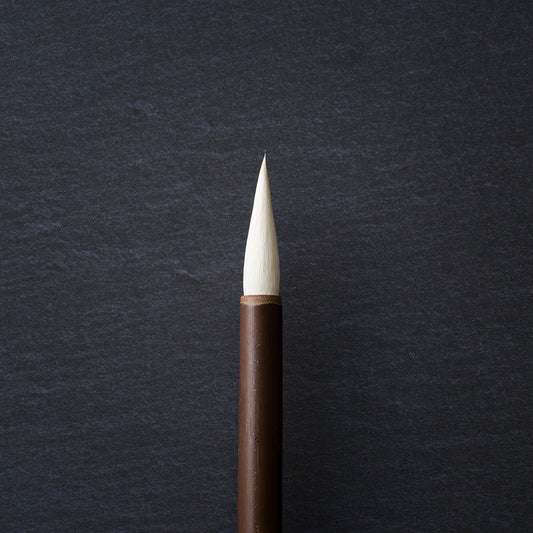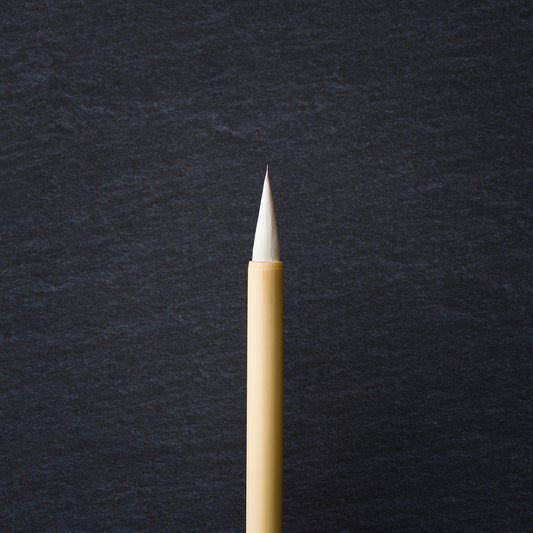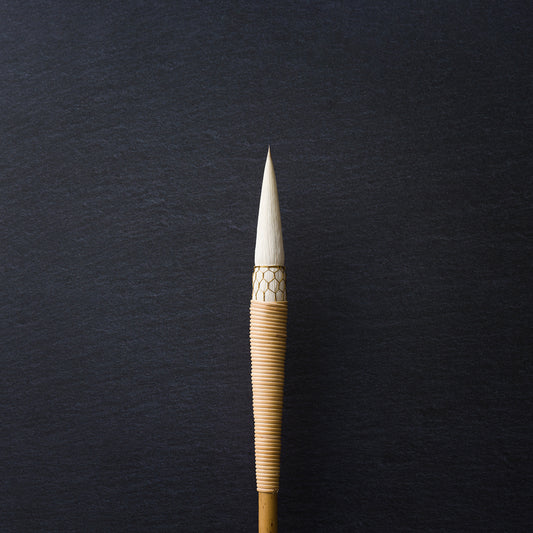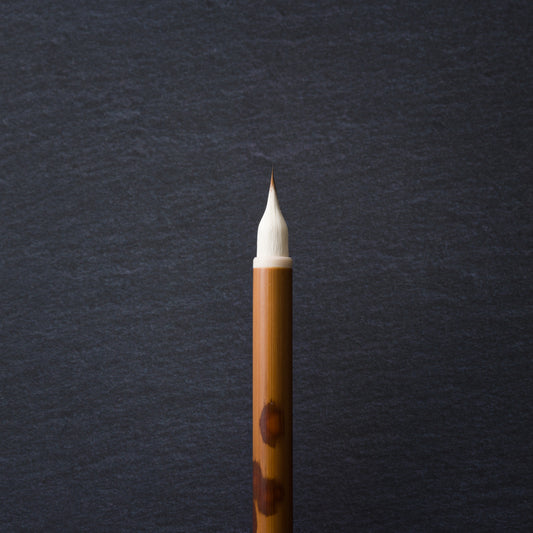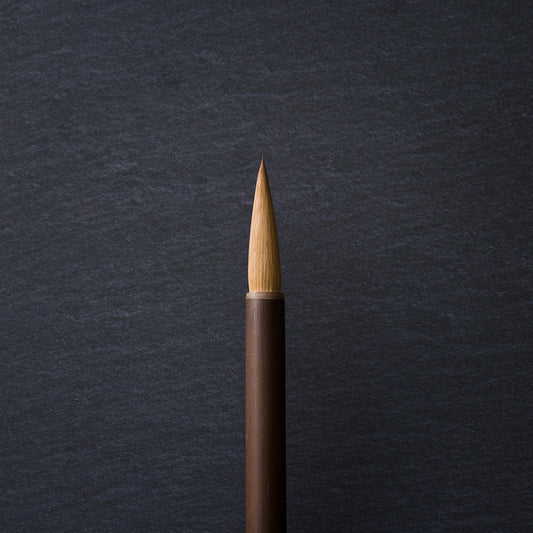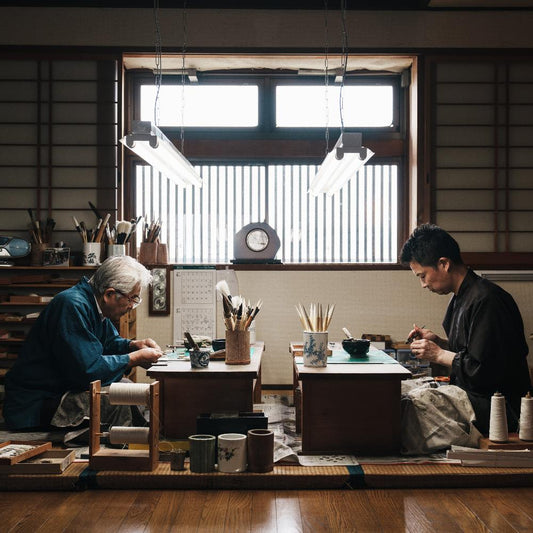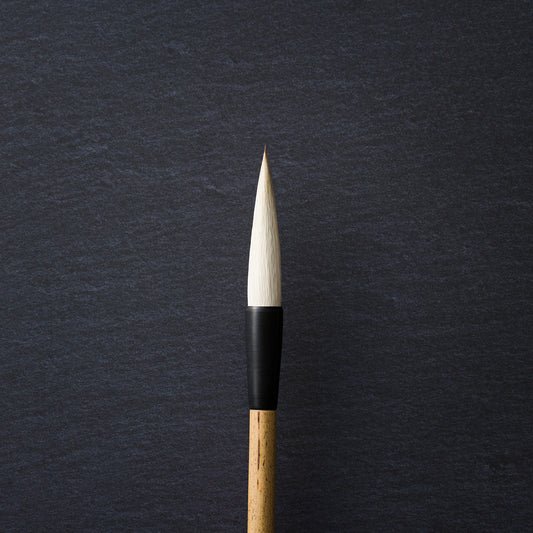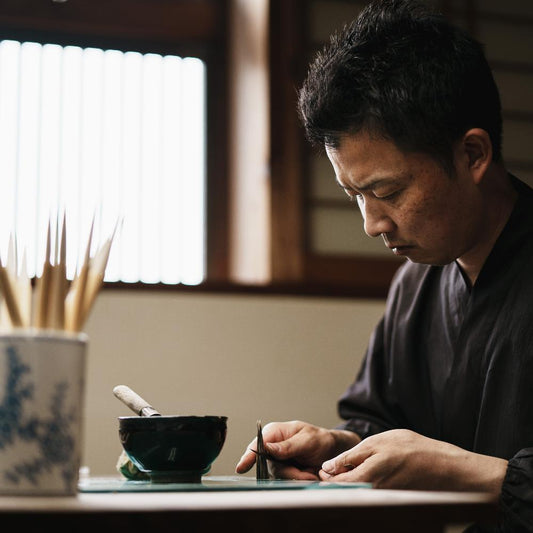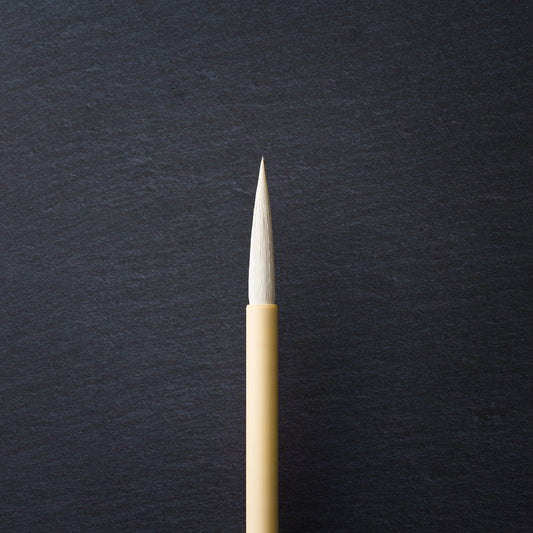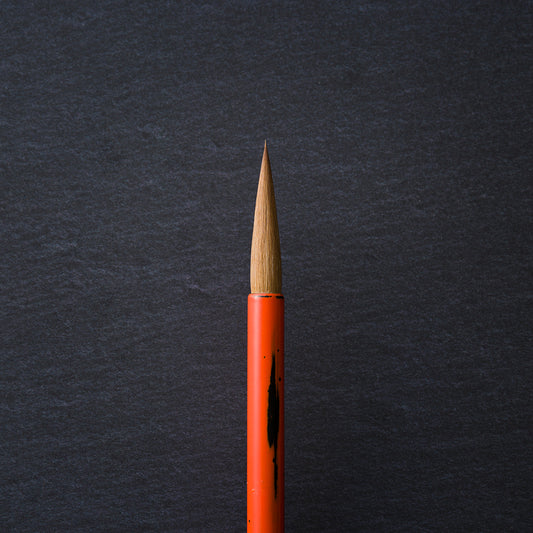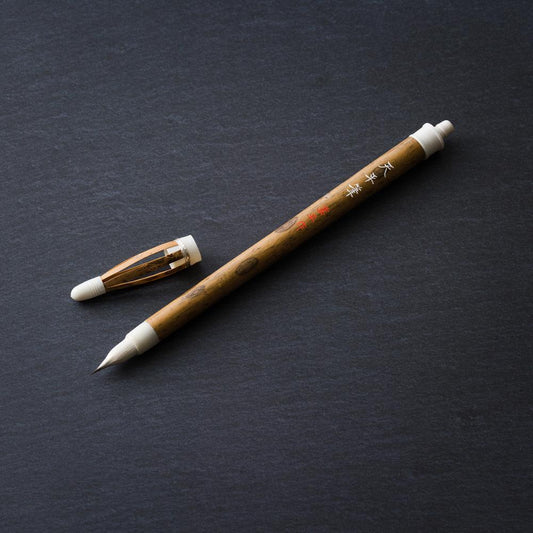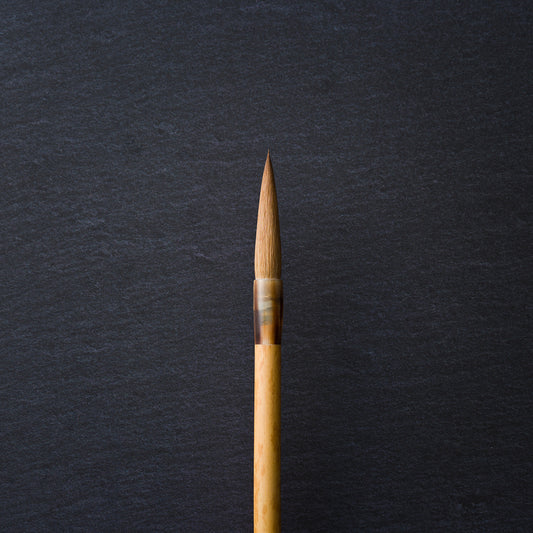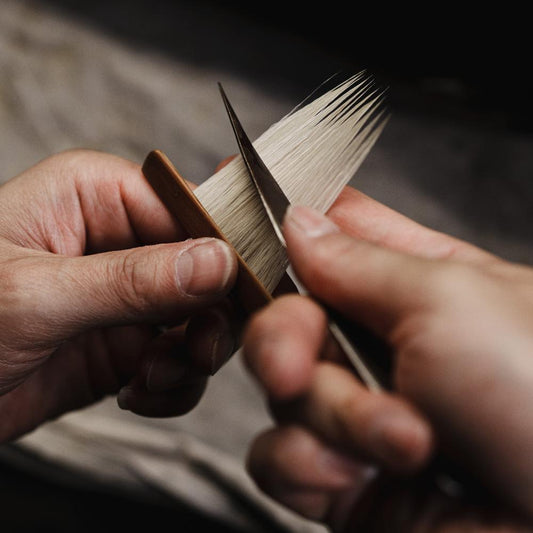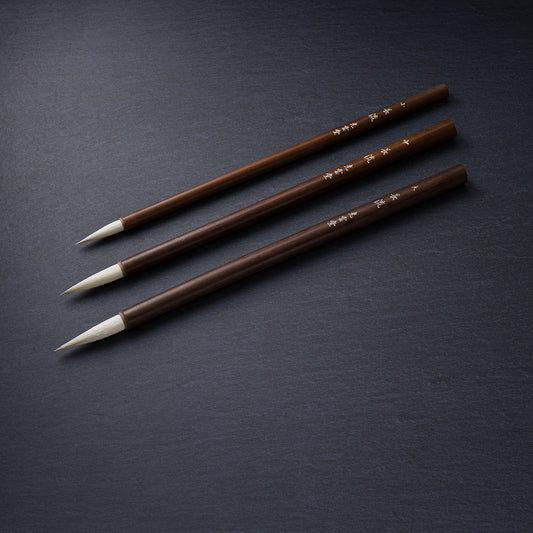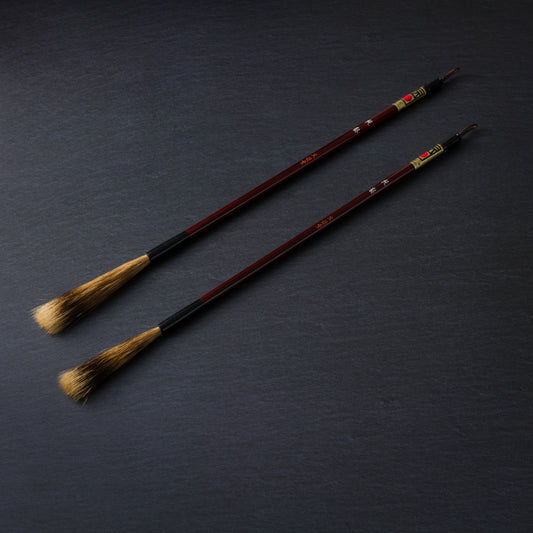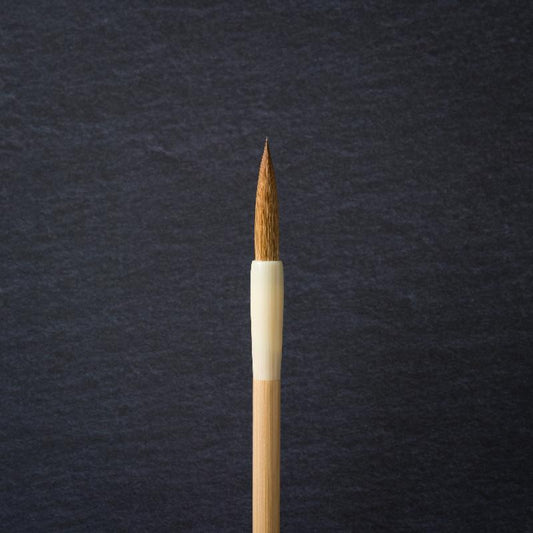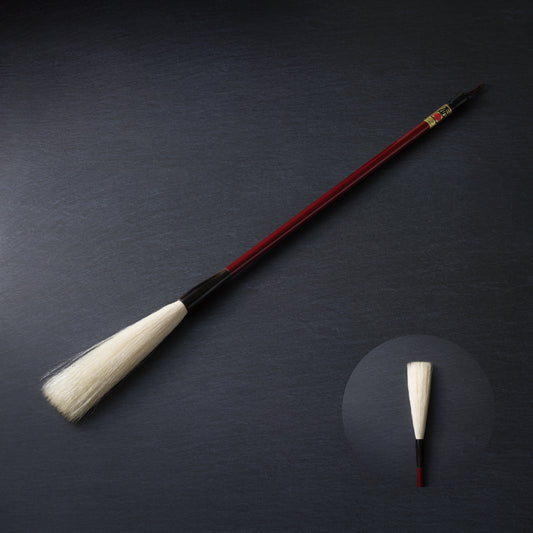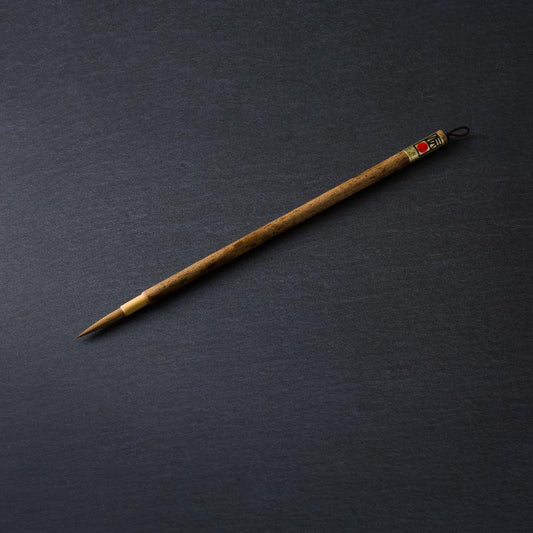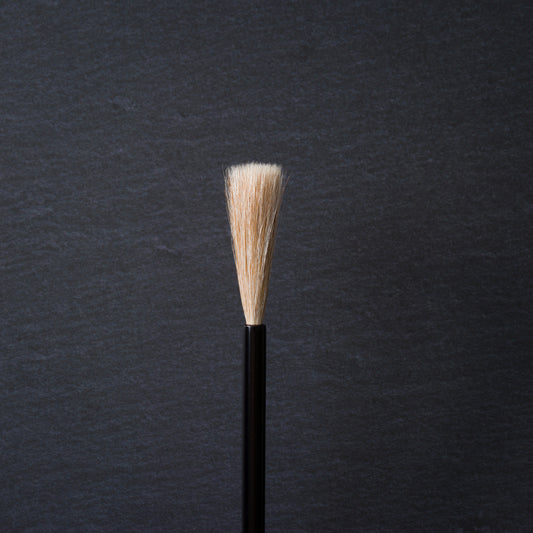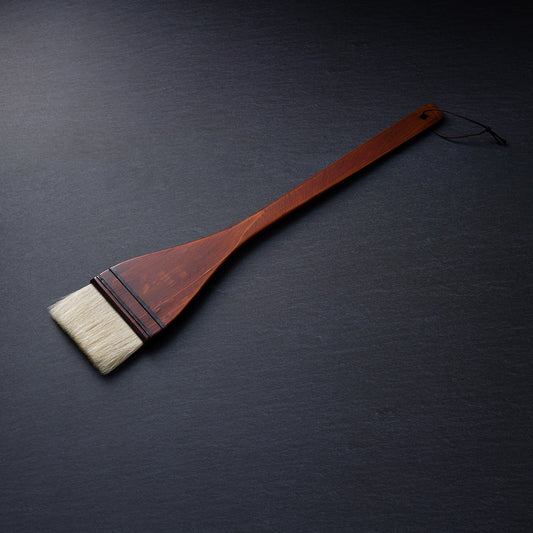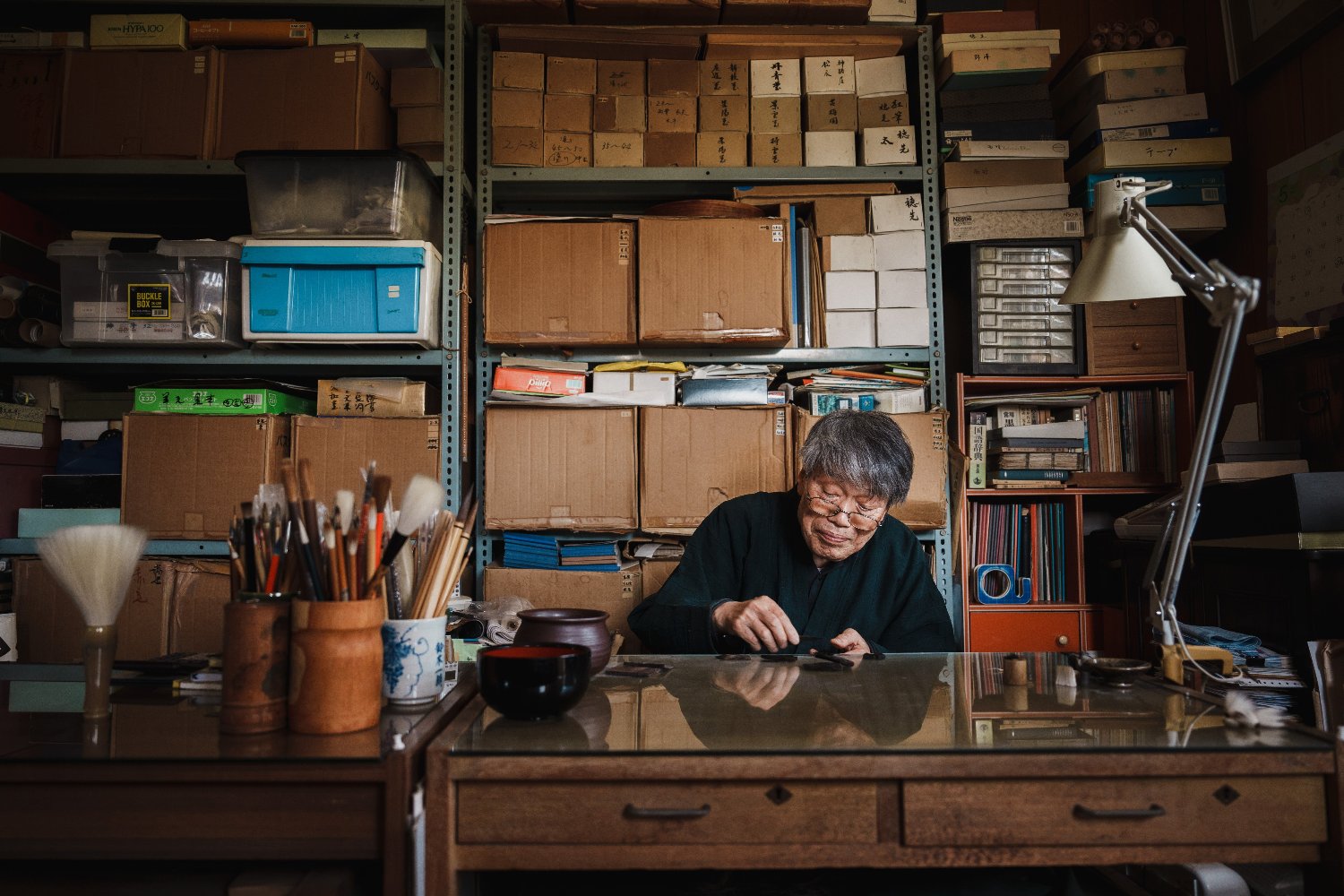
奈良筆伝統工芸士 Kazuo Suzuki
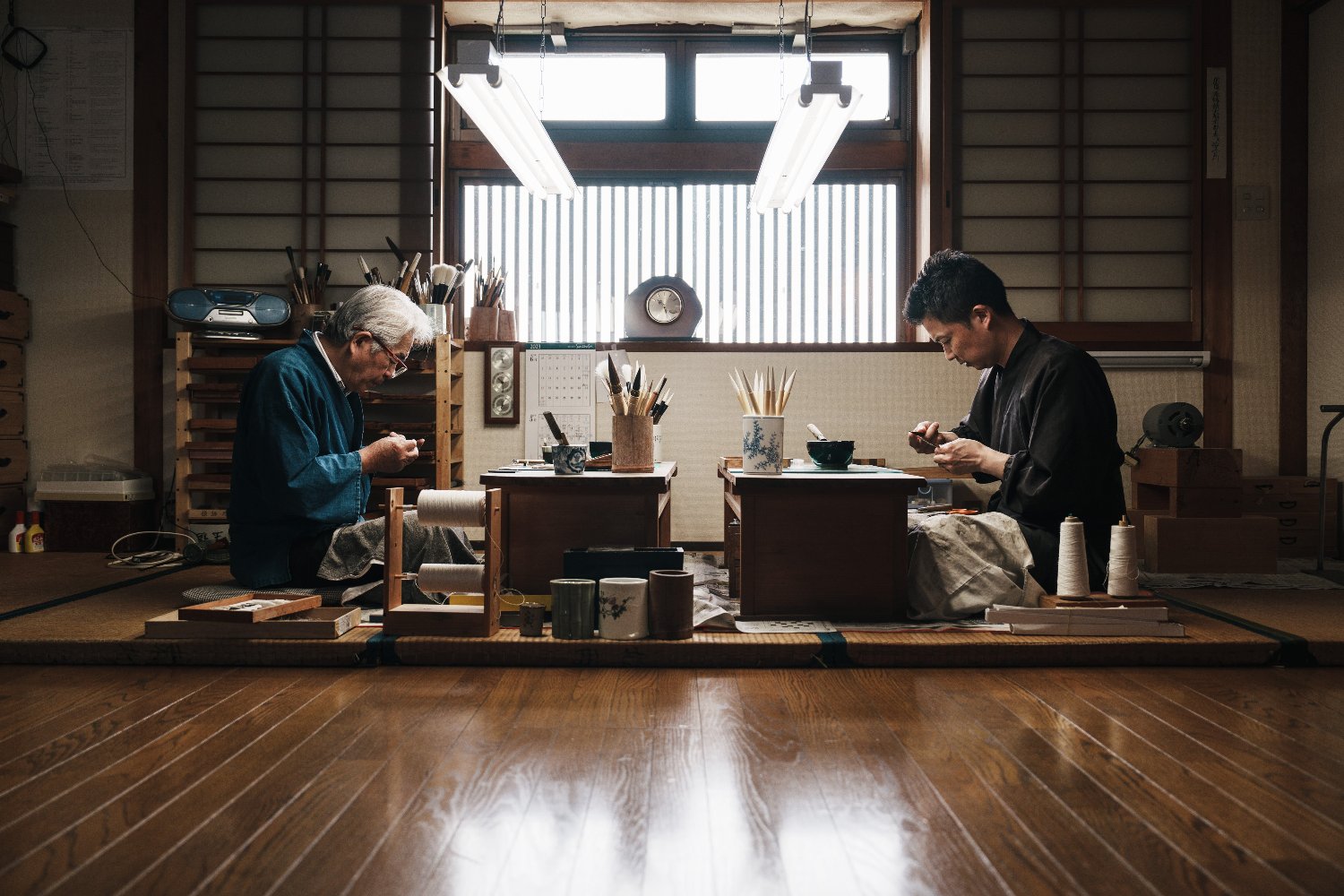
攀桂堂筆師 Junichi Fujino
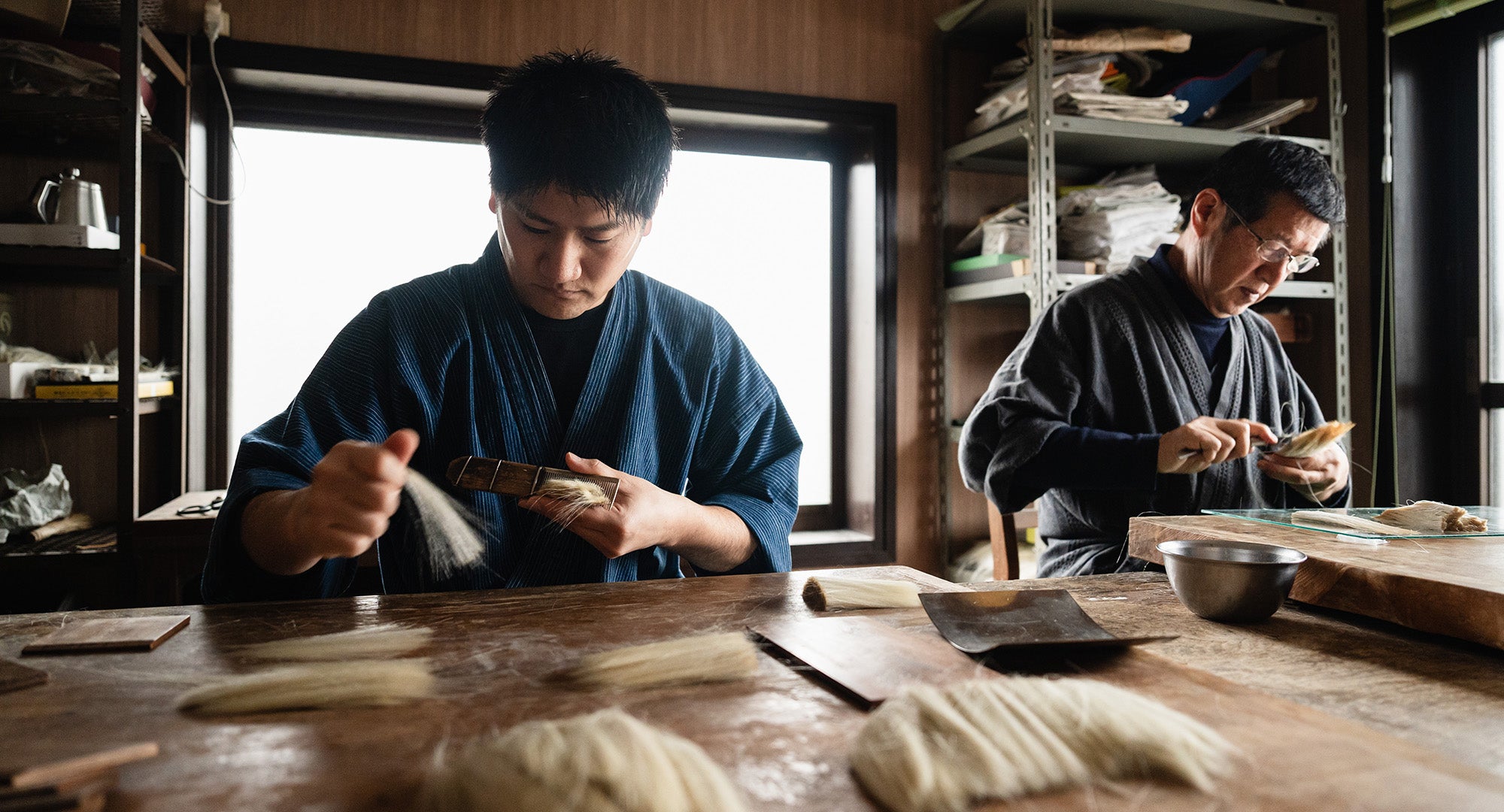
川尻筆伝統工芸士 Koso Hata
-
【NARA FUDE】 KASHIN for Suibokuga paintings
Normaler Preis Von $28.00Normaler PreisStückpreis / pro -
【HANKEIDO】SUMIE FUDE for Sumie paintings
Normaler Preis Von $27.00Normaler PreisStückpreis / pro -
【NARA FUDE】MENSO Fude Selection
Normaler Preis Von $14.00Normaler PreisStückpreis / pro -
【NARA FUDE】SAKUYO Fude for sumie and suibokuga paintings
Normaler Preis Von $24.00Normaler PreisStückpreis / pro -
【HANKEIDO】Maki Fude - RYUTOMAKI FUDE in a paulownia box.
Normaler Preis Von $111.00Normaler PreisStückpreis / pro -
【HANKEIDO】Maki Fude - Jakuto Fude (Sparrow-Head Brush)
Normaler Preis Von $28.00Normaler PreisStückpreis / pro -
【NARA FUDE】KASUI for Suibokuga paintings
Normaler Preis Von $66.00Normaler PreisStückpreis / pro -
【HANKEIDO】AMAO Tanpo Fude: highly recommended for ENSO writing
Normaler Preis Von $38.00Normaler PreisStückpreis / pro -
【HANKEIDO】Calligraphy brush - KENGO FUDE
Normaler Preis Von $27.00Normaler PreisStückpreis / pro -
rimpamura Original: The Beauty of Lines - Premium Fine Hair Drawing Brush Set -
Normaler Preis $59.00Normaler PreisStückpreis / pro -
【HANKEIDO】Calligraphy brush - NUKINA SUOH
Normaler Preis Von $28.00Normaler PreisStückpreis / pro -
【NARA FUDE】Calligraphy brush "KEIFUKU" (also known as "Devilish Brush")
Normaler Preis $137.00Normaler PreisStückpreis / pro -
【HANKEIDO】Maki Fude - TENPYO FUDE, suitable for copying sutras
Normaler Preis Von $92.00Normaler PreisStückpreis / pro -
【NARA FUDE】Calligraphy brush "SOKUTEN KYOSHI" (one of The Three Devilish Brushes)
Normaler Preis $235.00Normaler PreisStückpreis / pro -
【HANKEIDO】Maki Fude - SHIBIEN
Normaler Preis $35.00Normaler PreisStückpreis / pro -
CHORYU: The Definitive Sumi-e Brush
Normaler Preis Von $25.00Normaler PreisStückpreis / pro -
【NARA FUDE】KASHIN Special Edition – Long Tip, good for calligraghy and sumie painting
Normaler Preis $72.00Normaler PreisStückpreis / pro -
【KAWAJIRI】Calligraphy brush - MUJINA
Normaler Preis Von $105.00Normaler PreisStückpreis / pro -
【KAWAJIRI】Calligraphy brush - ISHIN
Normaler Preis $92.00Normaler PreisStückpreis / pro -
【KAWAJIRI】KO SAI KOHO – Daruma Fude with Red-Tame Lacquer Handle
Normaler Preis Von $215.00Normaler PreisStückpreis / pro -
【KAWAJIRI】Well-aged Pure Kolinsky with Mottled Bamboo Handle
Normaler Preis $189.00Normaler PreisStückpreis / pro -
【KAWAJIRI】Calligraphy brush - MABOROSHI
Normaler Preis $280.00Normaler PreisStückpreis / pro -
MIZUBAKE: The Superior Goat Hair Water Brush
Normaler Preis $17.00Normaler PreisStückpreis / pro -
EBAKE: The Superior Goat Hair Lay-In Brush
Normaler Preis Von $36.00Normaler PreisStückpreis / pro -
【KAWAJIRI】Calligraphy brush - Well-aged horsehair
Normaler Preis Von $189.00Normaler PreisStückpreis / pro
-

筆 Brushes for Calligraphy
Too know more.Rimpamura offers a diverse selection of brushes, featuring various manufacturing methods, types of raw hair, and production regions. From calligraphy practice to artistic works, our collection supports a wide range of expressive needs.
-

筆 Brushes for paintings
To know more.Rimpamura has curated a selection of rare and precious brushes, carefully chosen for their exceptional quality and performance. Whether you're a beginner or an experienced artist, these brushes will elevate your painting experience to the next level.
-

筆 Enso Fude
To know more.Enso is commonly drawn by connecting the starting and ending points in one stroke to create a perfect circle. To draw a clean circle, maintain a consistent speed and focus on stable brush movement. Slowly and steadily draw one circle over a minute, feeling a unity between oneself and the brush while firmly grasping the paper.


